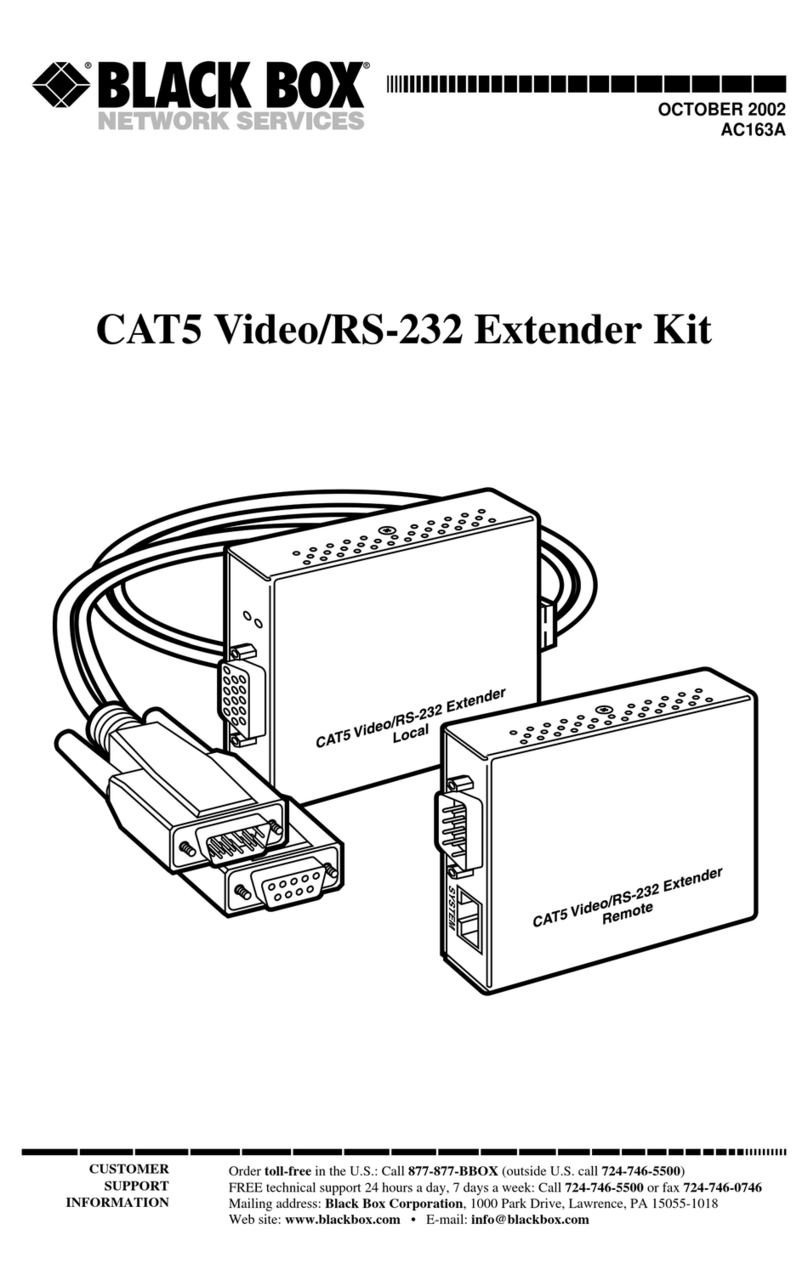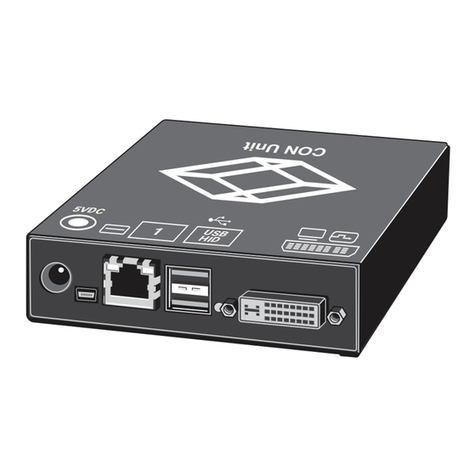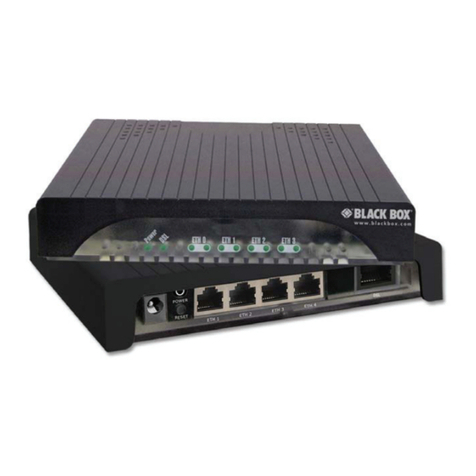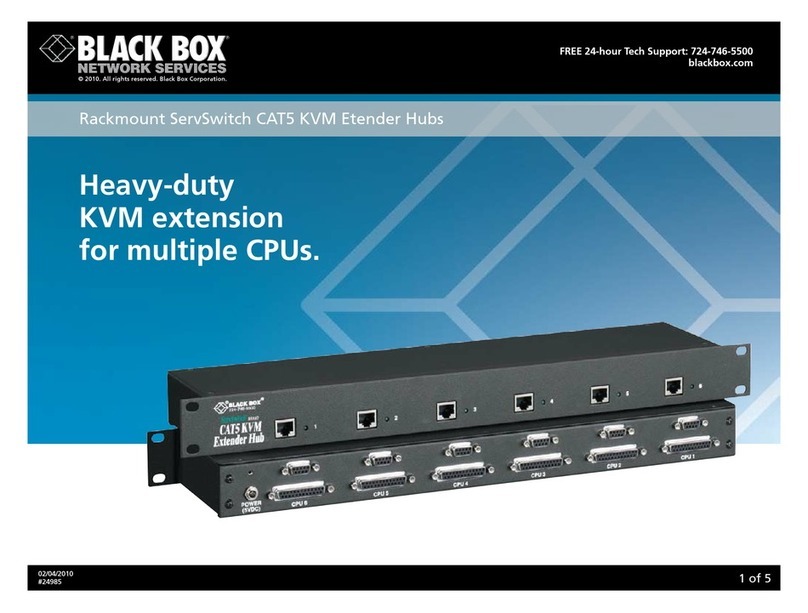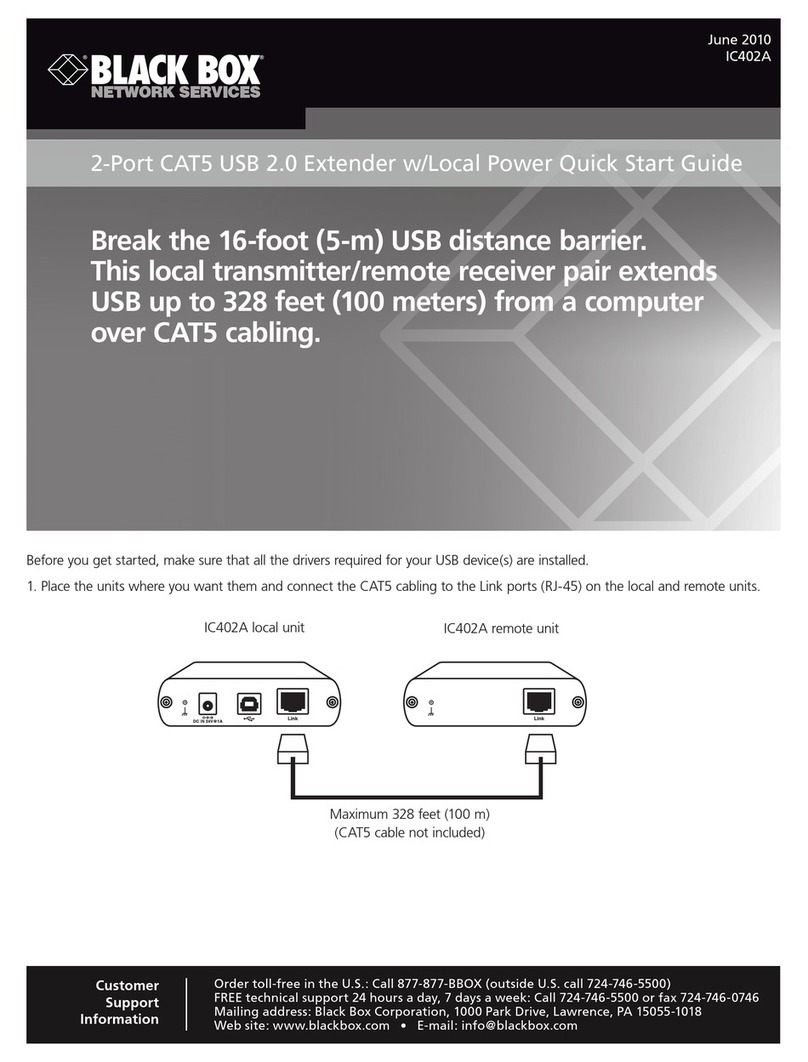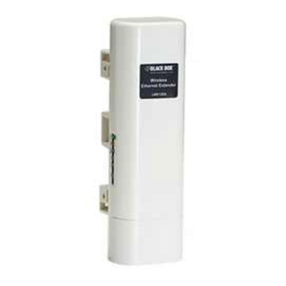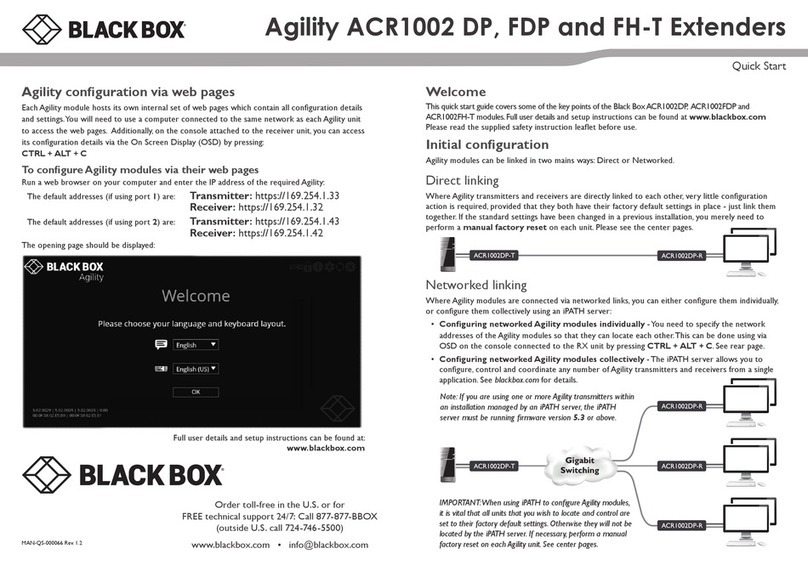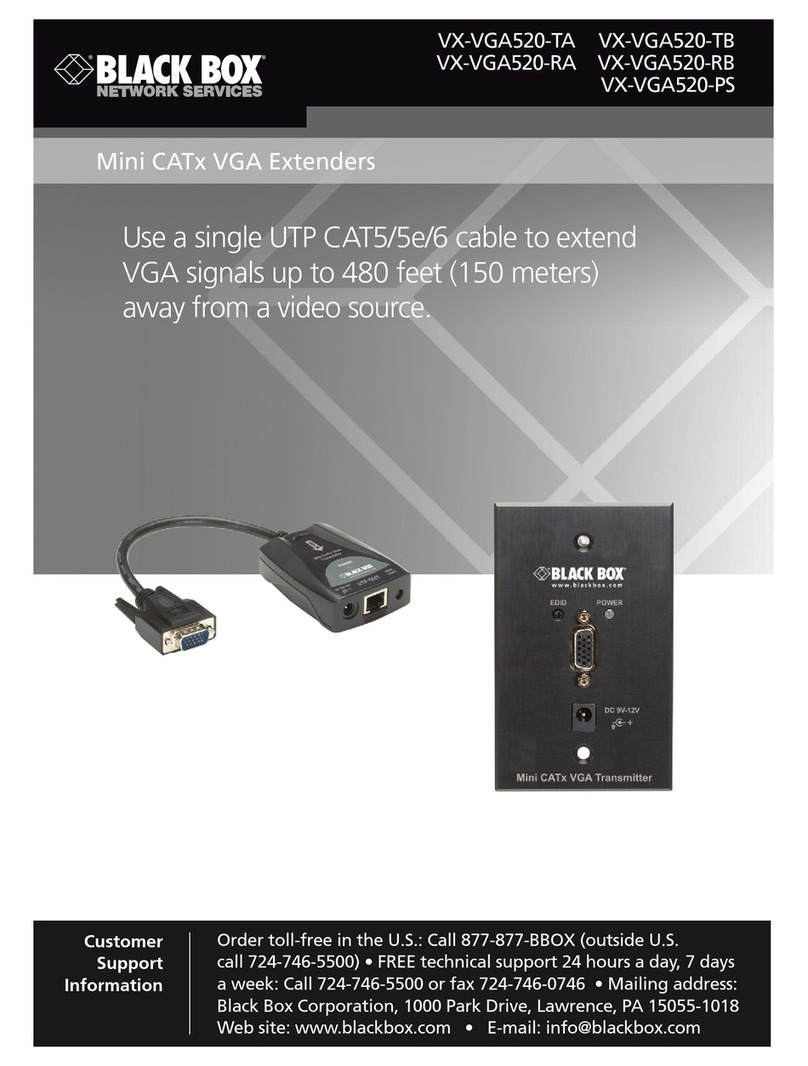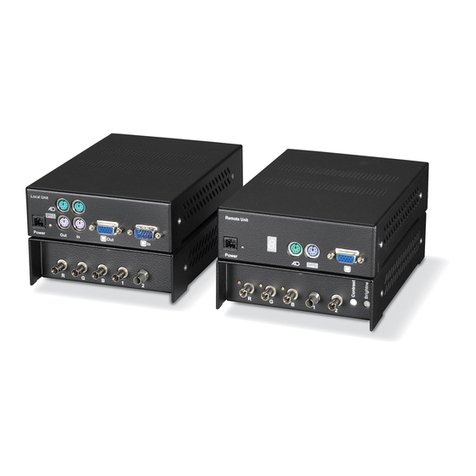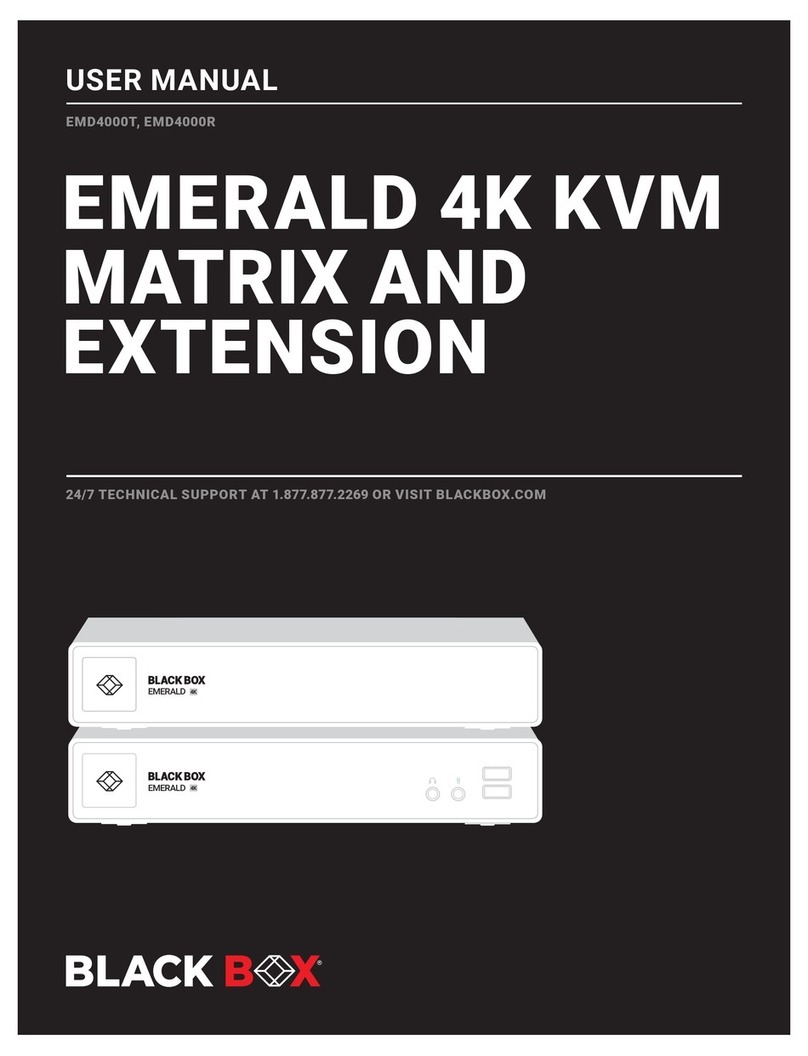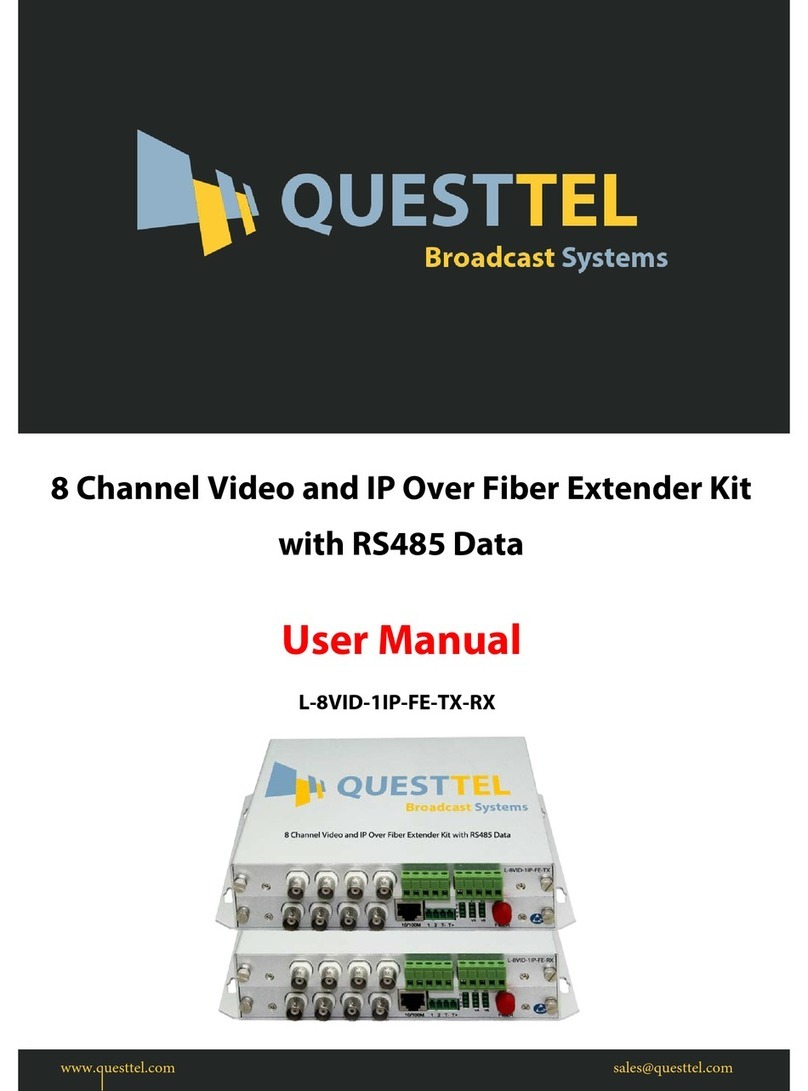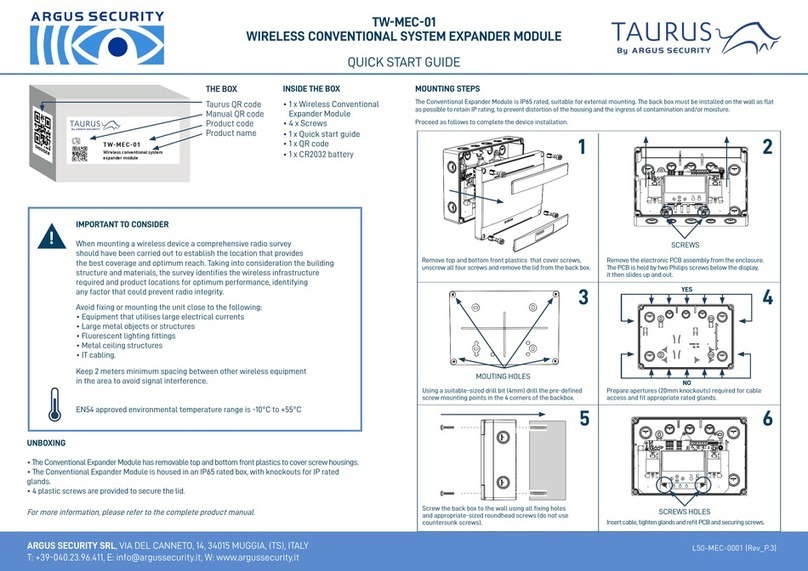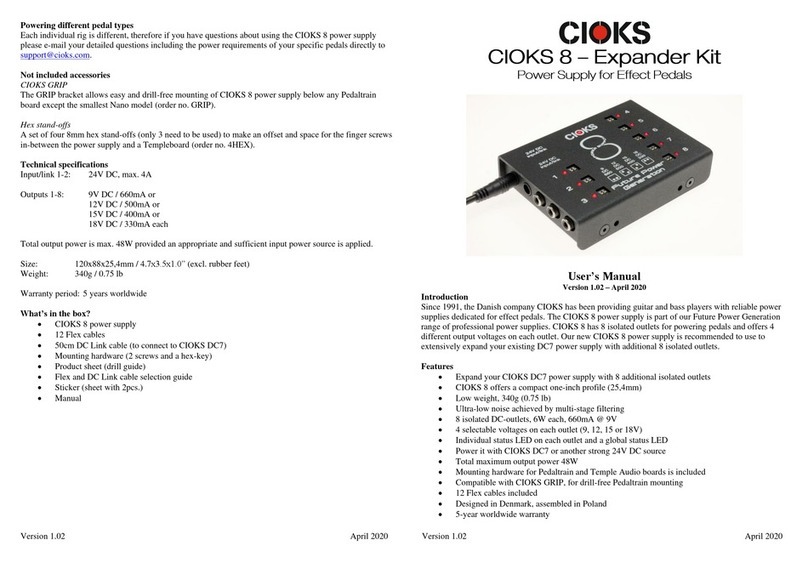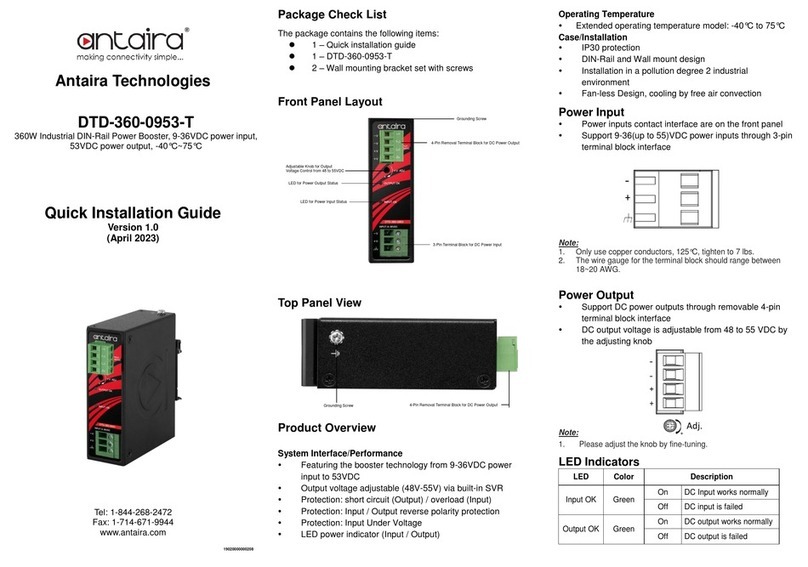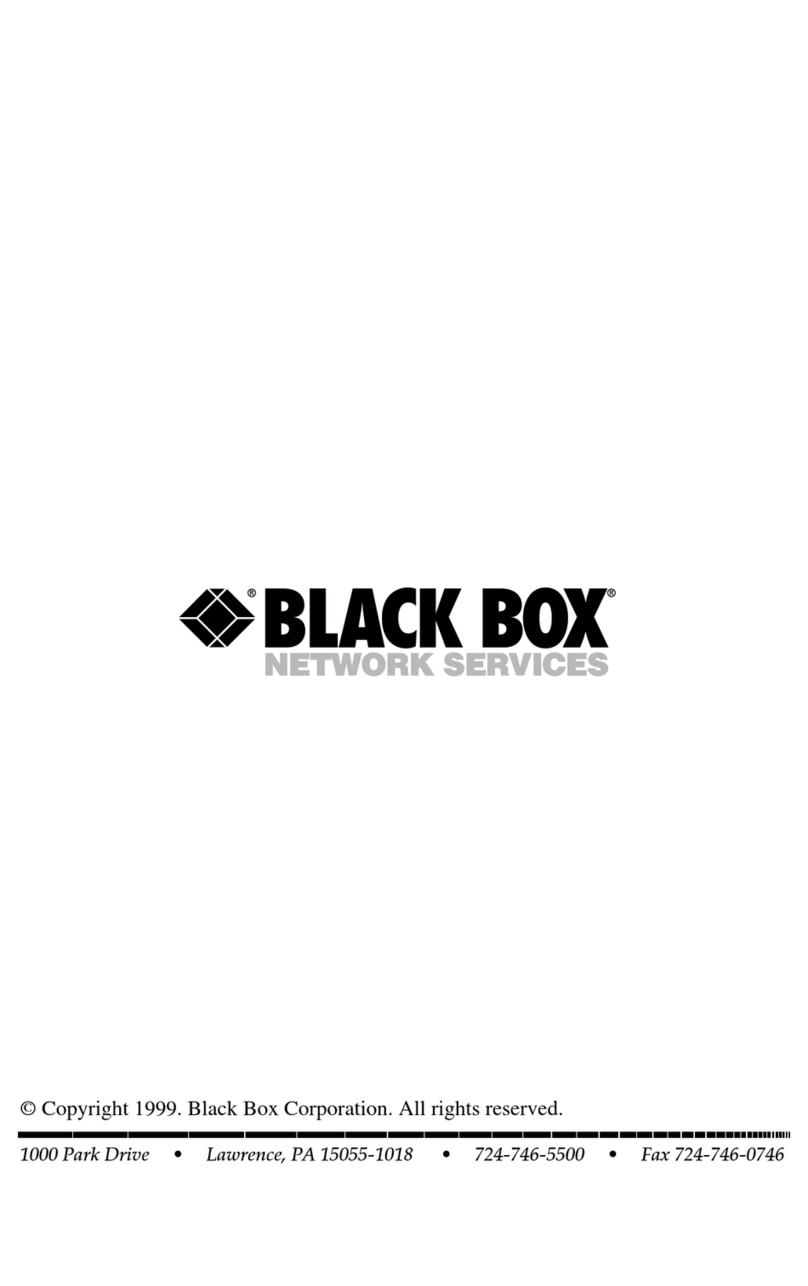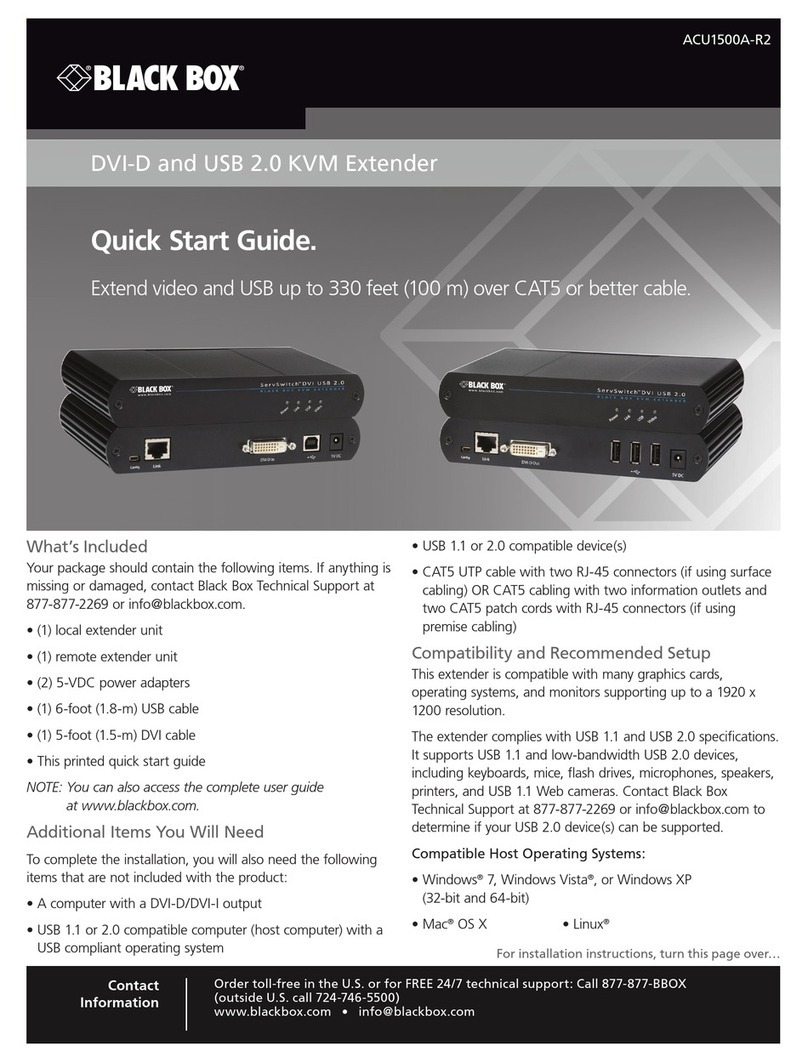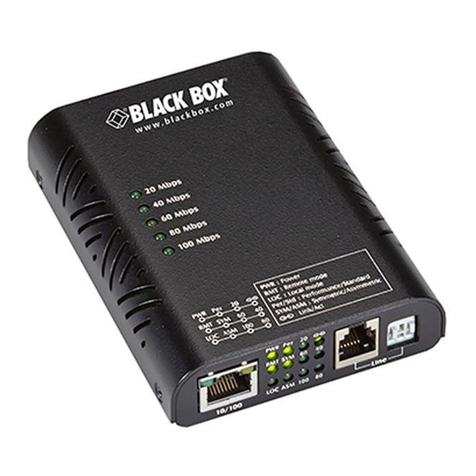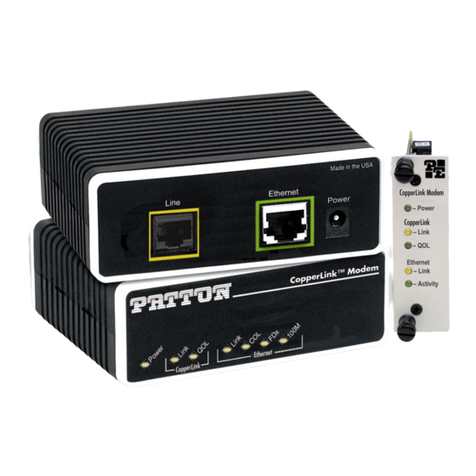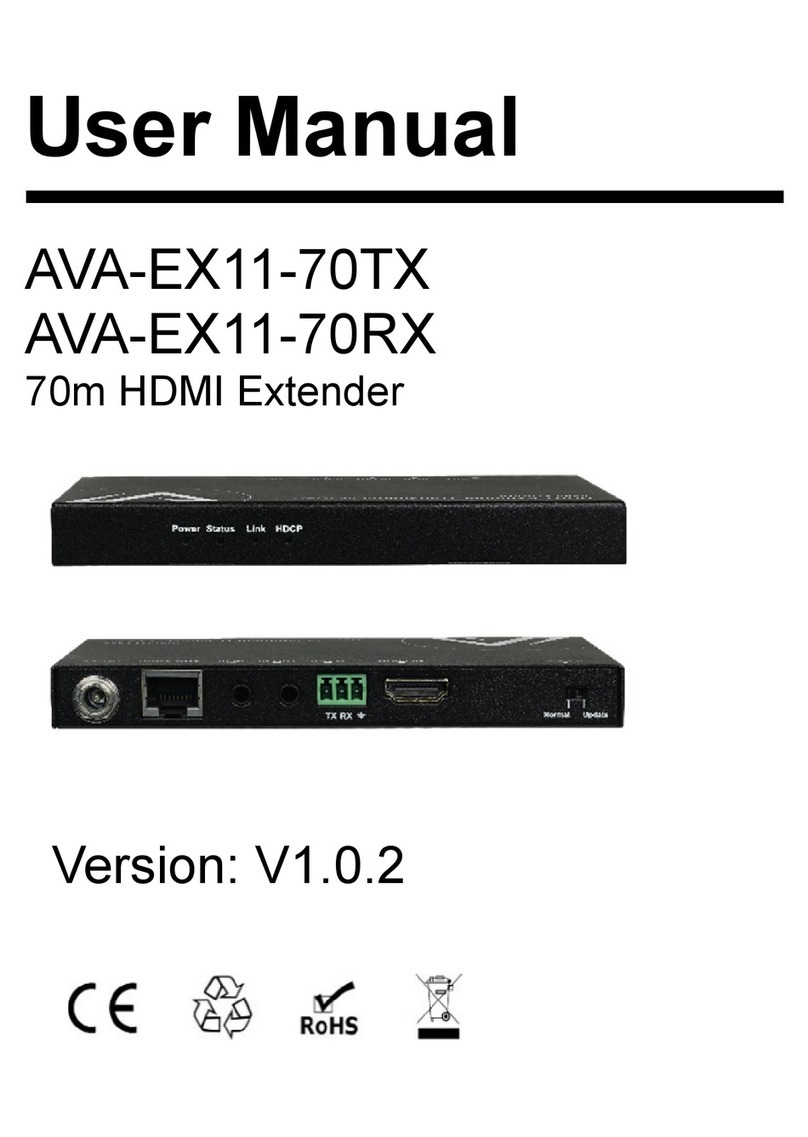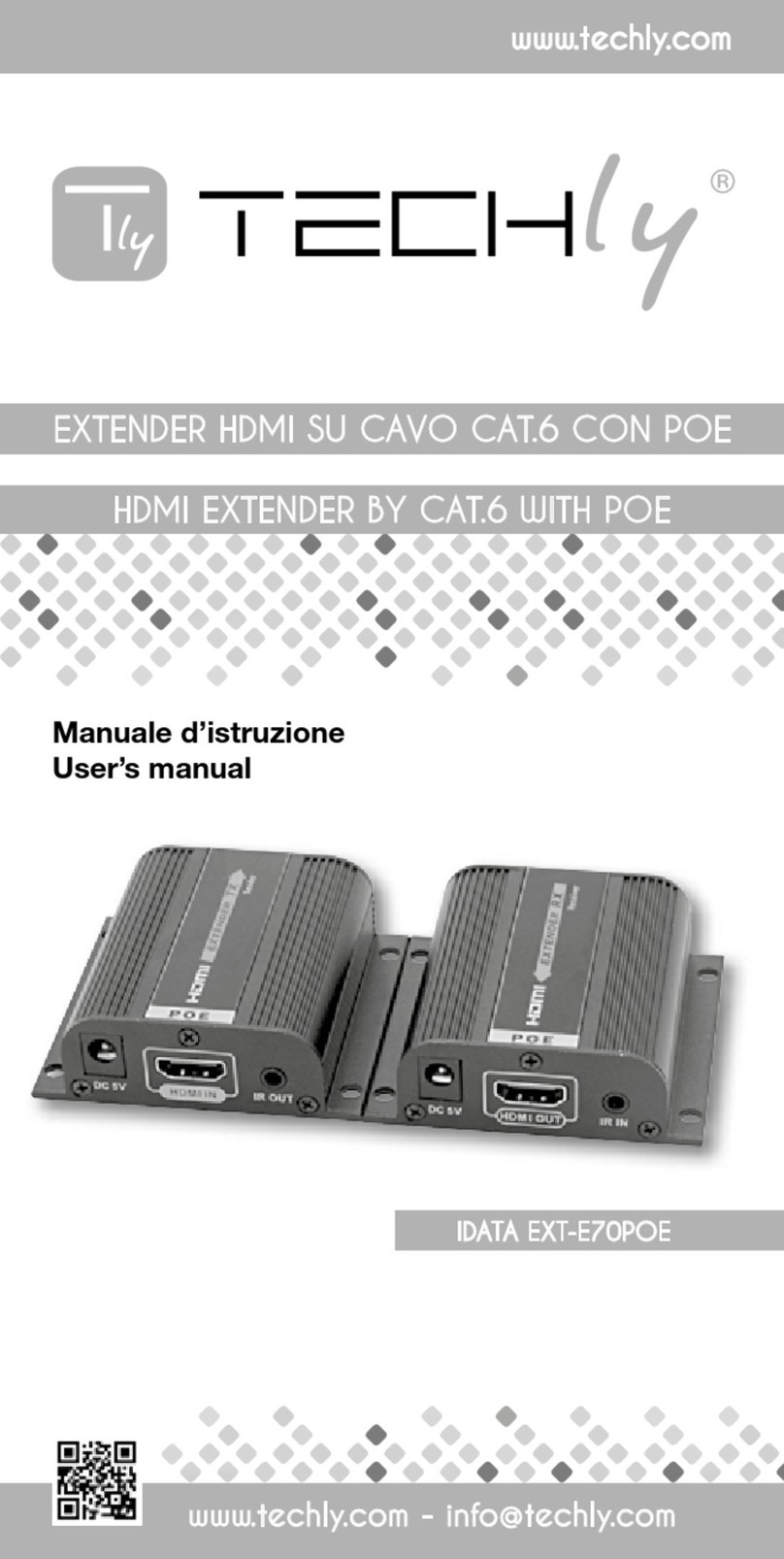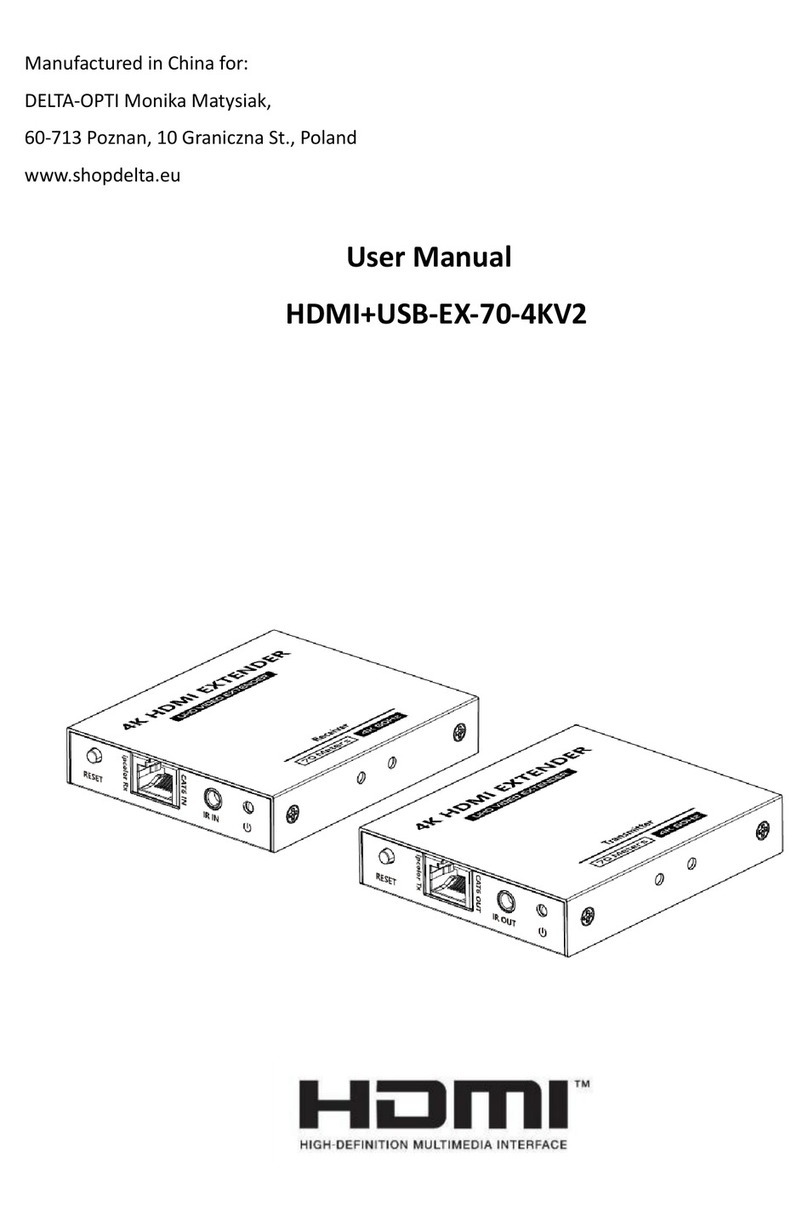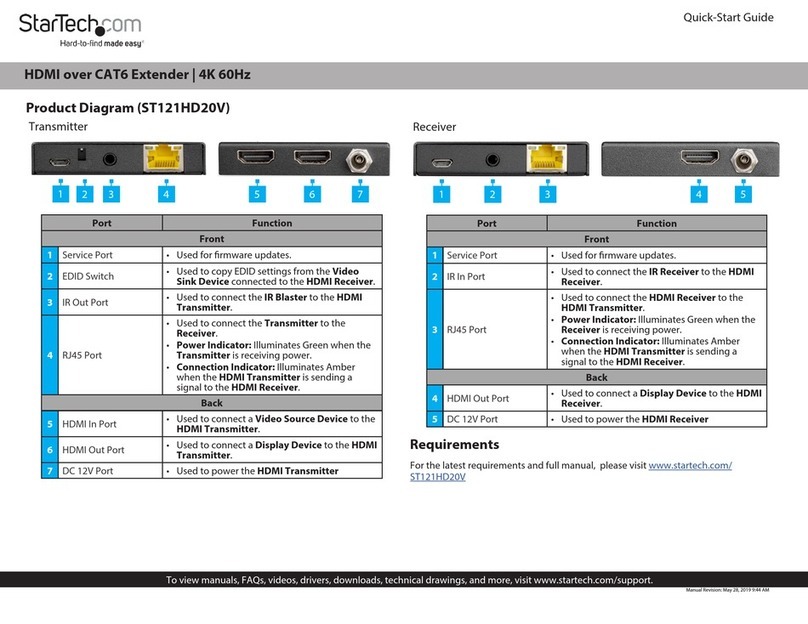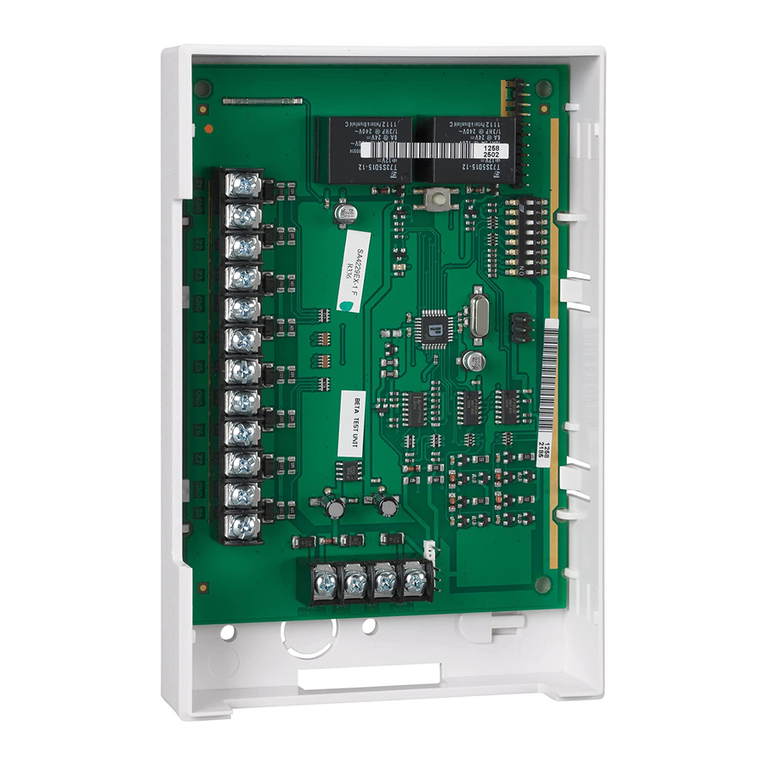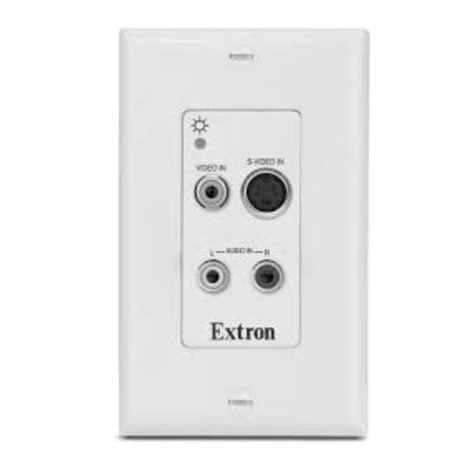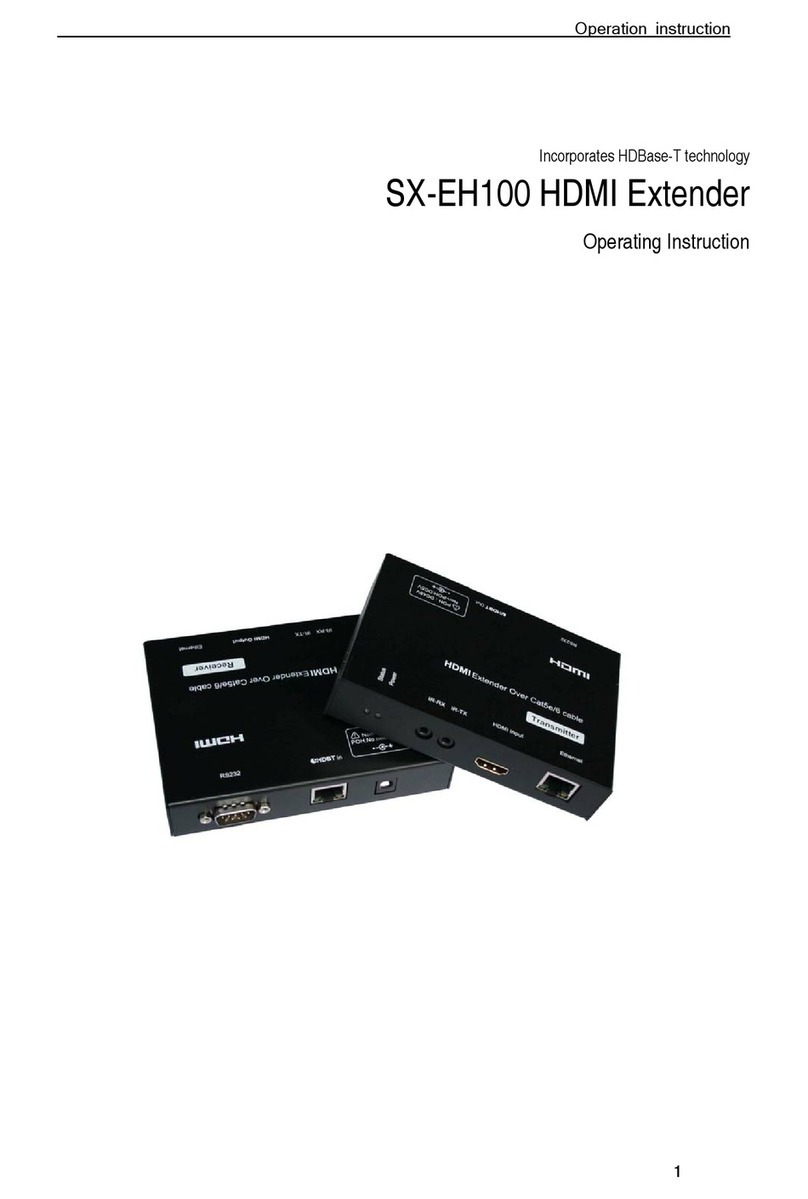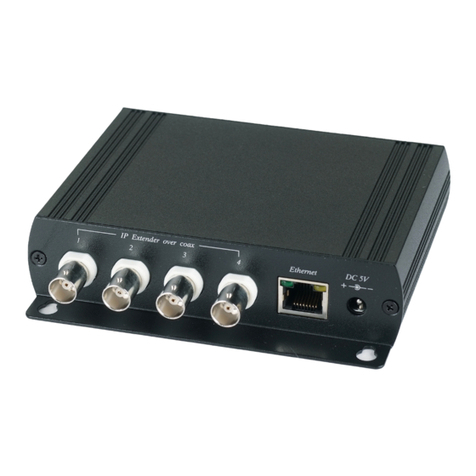56
Forcing
the
Duplex
Mode
The LAN Extender Modules’ Ethernet port can be manually configured
for either Half- or Full-Duplex operation. Before manually setting the
duplex mode, disable Auto-Negotiation (Set Dip Switch 1 to OFF.)
• Configure the Ethernet port for Full-Duplex by setting Dip Switch 6
to the ON position (Default).
• Configure the Ethernet port for Half-Duplex by setting Dip Switch 6
to the OFF position.
Forcing
the
Speed
The LAN Extender Modules’ Ethernet port can be manually configured-
for 10 or 100 Mbps operation. Before manually setting the speed, disable
Auto-Negotiation (Set Dip Switch 1 to the OFF position.)
• Configure the Ethernet port for 10 Mbps operation by setting
Dip Switch 5 to the OFF position.
• Configure the Ethernet port for 100 Mbps operation by setting
Dip Switch 5 to the ON position.
Flow
Control
Flow Control is used to throttle the END device to avoid dropping pack-
ets during network congestion. Full-Duplex Flow Control will Advertise
ONLY in Full-Duplex Mode. Full-Duplex Flow Control functions ONLY if
the link partner (end device) also has Flow Control. Half-Duplex Flow
Control DOES NOT Advertise. Configure the Ethernet port on the LAN
Extender Modules for Flow Control by setting Dip Switch 3 to the ON posi-
tion.
Link Fault
Propagate
Link Fault Propagate (LFP) is a troubleshooting feature. When LFP is
enabled and the Host CO unit detects that the Remote CPE does not have
a copper link, LFP will disable the Host’s copper transmitter. Configure CO
LAN Extender Modules for LFP by setting Dip Switch 9 to the ON position.
Do not enable LFP on CPE modules.
CO
as
Host
for
Remote
Management
of
CPE
Configuring the CO LAN Extender Module as a Host allows remote man-
agement of the CPE LAN Extender Module. Configure the CO LAN
Extender Module as a Host by setting the Dip Switch 8 to the ON position.
The VDSL ports must be connected and a link established prior to manag-
ing the remote unit.
The 10/100 Twisted Pair Ethernet Port
The twisted pair Ethernet port on the LAN Extender Modules (hereon
referred to as the Ethernet port) auto-negotiates for speed and duplex
mode. These modules also provide the option of manually setting the speed
and duplex mode if the connected devices do not have the ability to auto-
negotiate, or when Auto-Negotiation is not preferred.
Auto-NNegotiation
The LAN Extender Modules ship from the factory with Auto-Negotiation
enabled on the Ethernet port. In this mode, the Ethernet port negotiates for
speed and duplex (i.e. the module autosenses 10 Mbps Full-Duplex, 10
Mbps Half-Duplex, 100 Mbps Full-Duplex or 100 Mbps Half-Duplex with
Flow Control). Configure Auto-Negotiation on the LAN Extender Modules
with the management software or by adjusting the DIP switch (for unman-
aged modules).
Selective
Advertising
Selective Advertising, when used in combination with Auto-Negotiation,
advertises only the configured speed and duplex mode for the Ethernet
port. If Selective Advertising and Auto-Negotiation are both switched ON,
the Ethernet port’s speed (10 or 100 Mbps) and Duplex mode (FDX or
HDX) can be manually configured. Configure the Ethernet port for
Selective Advertising by setting Dip Switches 4 and 5 to the ON position,
then selecting the speed and duplex.
NOTE
If a specific speed and/or duplex mode is required, use Selective Advertising rather
than Force Mode, when connecting to devices that ONLY auto-negotiate. Selective
Advertising is NOT an option when disabling Auto-Negotiation








